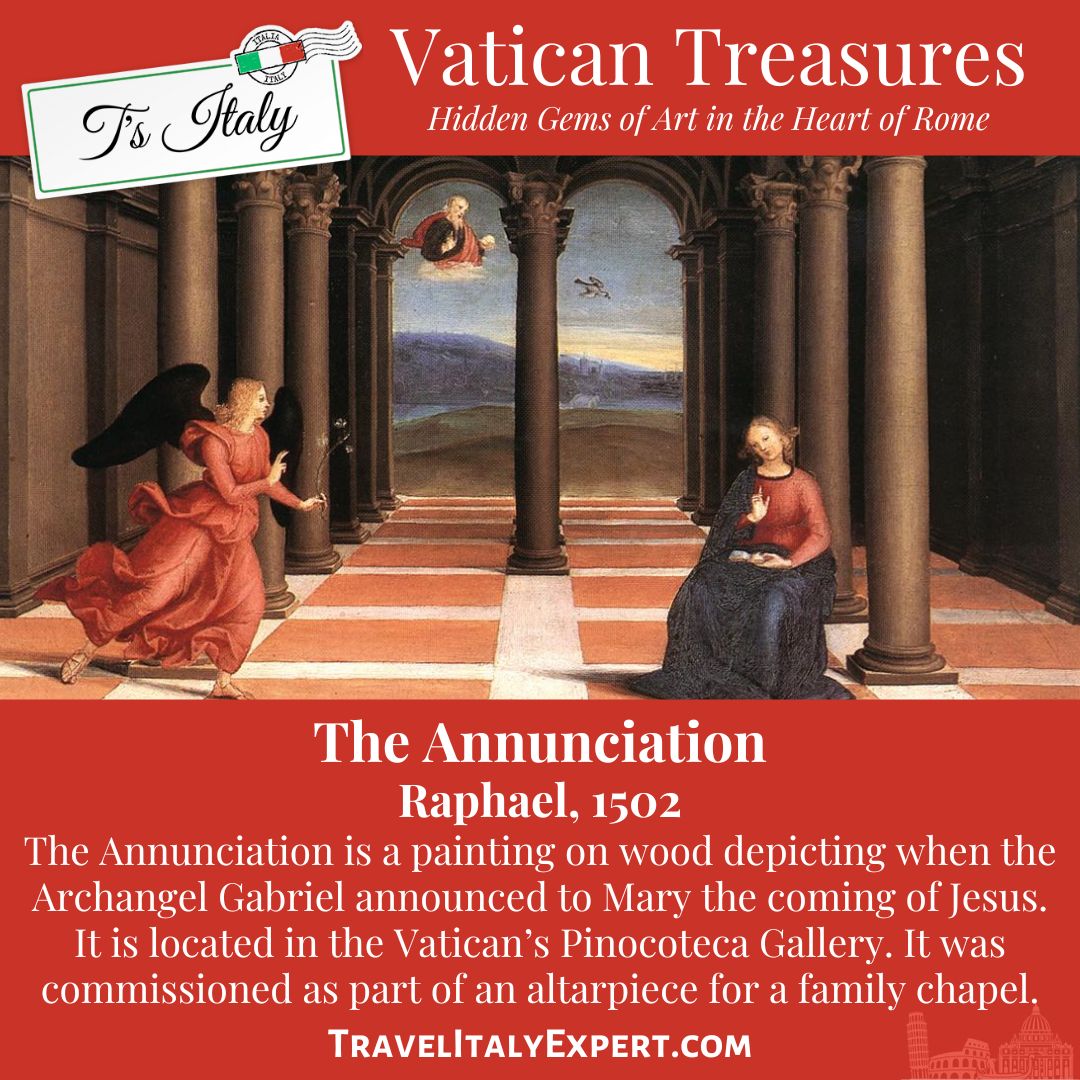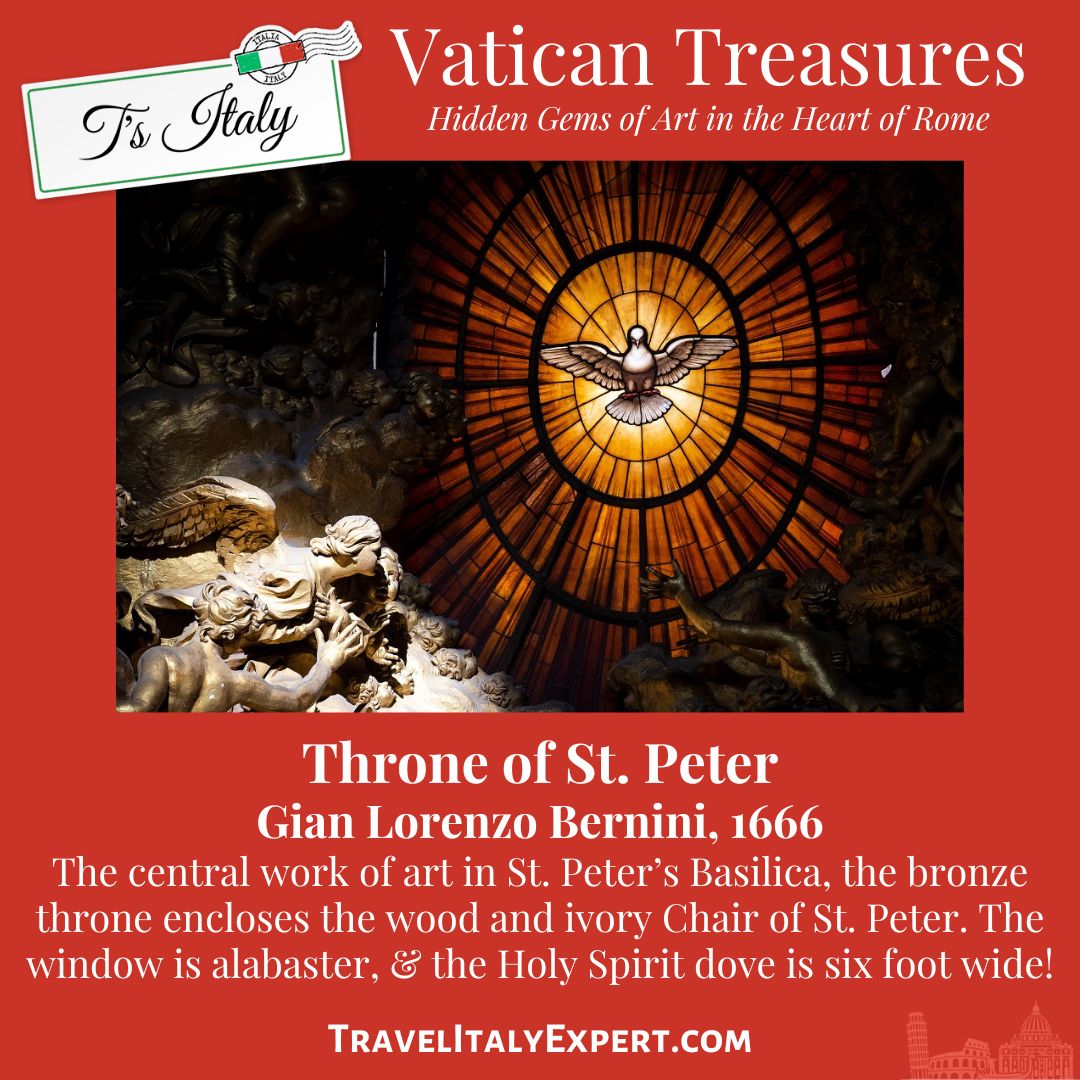The Annunciation, an early work by painter Raphael in 1502, depicts the day when the Archangel Gabriel appeared to Mary and revealed God’s will that she become the Mother of the Son of God and her acceptance. The painting is part of the “predella” (lowest part of an altarpiece) showing three episodes from life of the Blessed Mother and Christ’s infancy in the painting “The Crowning of the Virgin.” It was painted in tempera grasso on wood for the altar of the Oddi family chapel in the church of San Francesco al Prato in Perugia, Umbria. It resides now in Room VIII (16th Century) in the Vatican Pinacoteca (Art Gallery).
“Adam and Eve in the Garden of Eden” was painted in the early 19th Century by Austrian Johann Wenzel Peter, one of the foremost animalist painters of his day, was well-known for his knowledge and precision of animal form. This painting shows how Adam and Eve would have lived in harmony and peace with all of creation before the Fall from grace. In 1831, Pope Gregory XVI purchased over twenty of his works to furnish the Room of the Consistory for the Papal Apartments. The painting is now located in the Vatican Museums, in Room 16 of the Pinocoteca Vaticana. To learn more click here.
Photos: Public Domain, Vatican Museums, Shutterstock/AM113, Javen, Zoran Karapancev, Marek Poplawski, elen_studio







